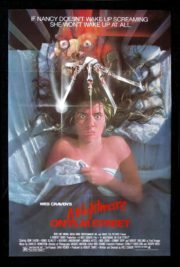A Haunting Citadel of Fear
“Our fears have become our worlds.” A line from Citadel, the haunting 2013 horror movie directed by Ciaran Foy, encapsulates the nightmarish landscape the protagonist navigates. At its heart, Citadel is a psychological horror-thriller that challenges both the protagonist and the audience to confront the primal fear of the unknown and the unfamiliar. The film follows Tommy (played by Aneurin Barnard), a young father struggling with crippling agoraphobia after his wife is viciously attacked by a group of twisted feral children. With his baby daughter in tow, Tommy must face the demons, both literal and metaphorical, that have taken over the dilapidated tower block he calls home.
Shadows and Whispers: Crafting Desolation
The atmosphere and tone of Citadel are integral to its storytelling. Foy capitalizes on the innate human fear of abandonment and isolation. The grey, desolate urban landscape with its stark, decaying architecture sets the stage for an unrelenting sense of dread. The film excels not in its use of extravagant visuals but in its embrace of the shadows, suggesting horrors lurking just beyond sight. The director constructs a terrifying labyrinthe where suspense and a foreboding sense of inevitability are constant companions to the viewer. He achieves this not through gratuitous violence but through calculated scenes that play on the fear of what might happen next.
The cinematography, characterized by its use of cold and desaturated colors, adds a chilling layer to the already disturbing narrative. Camera angles are often tight and claustrophobic, reinforcing Tommy’s agoraphobia and powerlessness. The absence of flashy special effects allows the movie’s subtle visual style to shine, making the rare bursts of violence more impactful for their realism.
As for the sound design, it’s a character in its own right. Silence is used oppressively, making every noise—from a baby’s cry to the crackle of a two-way radio—resonate with foreboding. The minimalist score by tomandandy creeps under your skin, perfectly accentuated by the moments of silence, ensuring that no audience member rests easy in their seat.
The Human Element: Paranoia and Performance
The ensemble’s performance in Citadel is perhaps its most consistently compelling attribute. Aneurin Barnard delivers a deeply nuanced portrayal of Tommy, allowing audiences to vicariously experience his fear. His transformation over the course of the film, from paralyzed victim to desperate protector, drives the story. The supporting characters, while less developed, serve as effective counterpoints to Barnard’s paranoia, grounding the film in a reality that’s just as frightening as the horrors faced.
At its core, the movie delves into psychological terror. It avoids typical supernatural tropes or gore for shock value, favoring instead the exploration of the human psyche and the power of suggestibility. This subtlety in its approach to horror could be its greatest strength or its critical weakness, depending on the viewer’s taste.
More Than Meets the Eye: Echoes of Society
Citadel cleverly utilizes horror as a lens to scrutinize societal issues, particularly urban decay and the associated psychological impact. It’s a commentary on the modern age’s sense of community or, perhaps more poignantly, the lack thereof. The film invites contemplation on the dehumanizing effects of fear and the desperate measures one might take to protect their own.
The methods used to instill fear in the audience are primarily psychological, worming their way into the mind and nesting there long after the credits roll. Shocking moments are sparing, but when they occur, they are abrupt and unsettling, adding to the overall effectiveness of the film’s disturbing ambiance.
Final Verdict: A Creeping Psychological Maze
As a horror movie enthusiast, you’ll find that Citadel may not cater to everyone’s tastes, particularly those favoring high-budget effects or fast-paced action. It’s a slow burn, a meticulous study of anxiety and the horrors that exist within and without. The film serves as a testament to the genre’s versatility, offering more than just jump scares. It’s a provocative, chilling piece that asks viewers to ponder not only what they’re watching but also their own internal citadels of fear.
Horror newcomers or those with a penchant for character-driven stories rooted in existential dread would likely appreciate this film’s quiet tension and atmospheric pressure. Conversely, viewers seeking visceral frights or classic horror tropes may find themselves wanting.
In comparison with other horror works, Citadel shares a kinship with films like The Babadook or It Follows—movies that blur the lines between psychological trauma and physical terror. It’s a cut from a different cloth than the slasher or supernatural dominance in the genre, but it’s this distinction that carves its own niche.
Regardless of its reception, Citadel stands as a bold exploration of the depths of human fear and isolation. Whether you find the film profoundly unsettling or a missed opportunity for a more traditional horror experience, it undeniably creeps its way into the darker recesses of your mind and lingers there. Viewer discretion is advised for those sensitive to themes of violence and psychological trauma. For those willing to face their fears, Citadel awaits.




